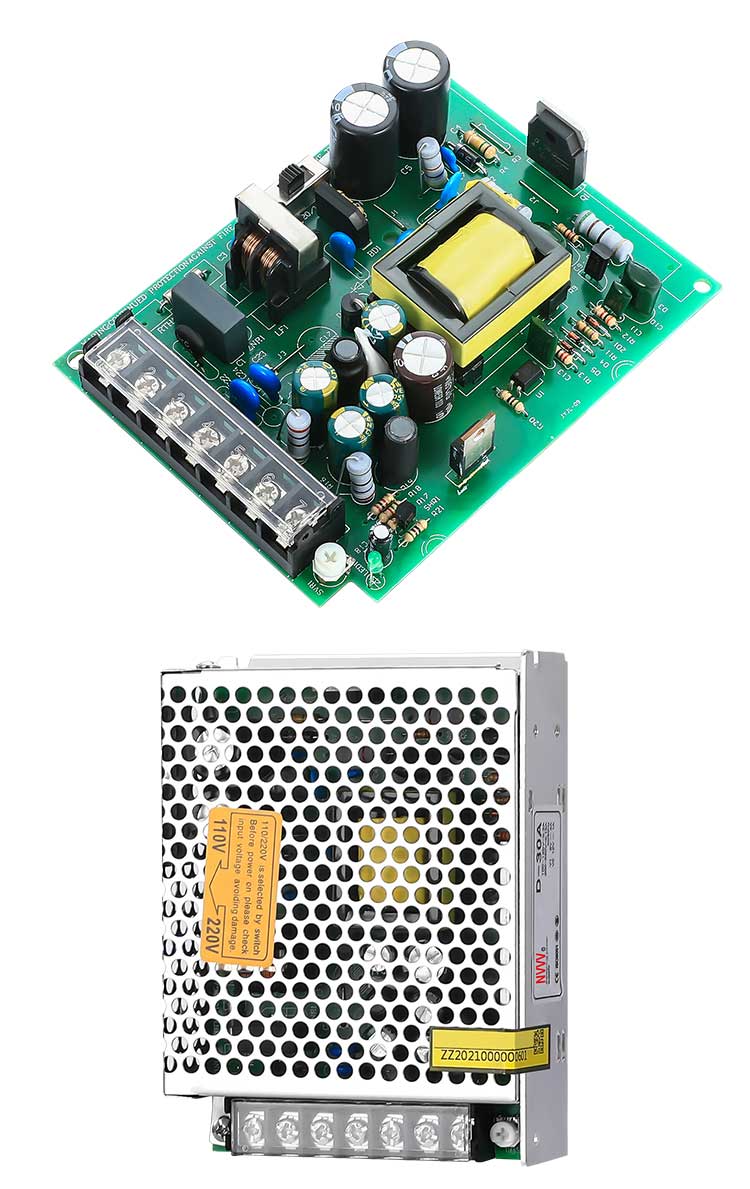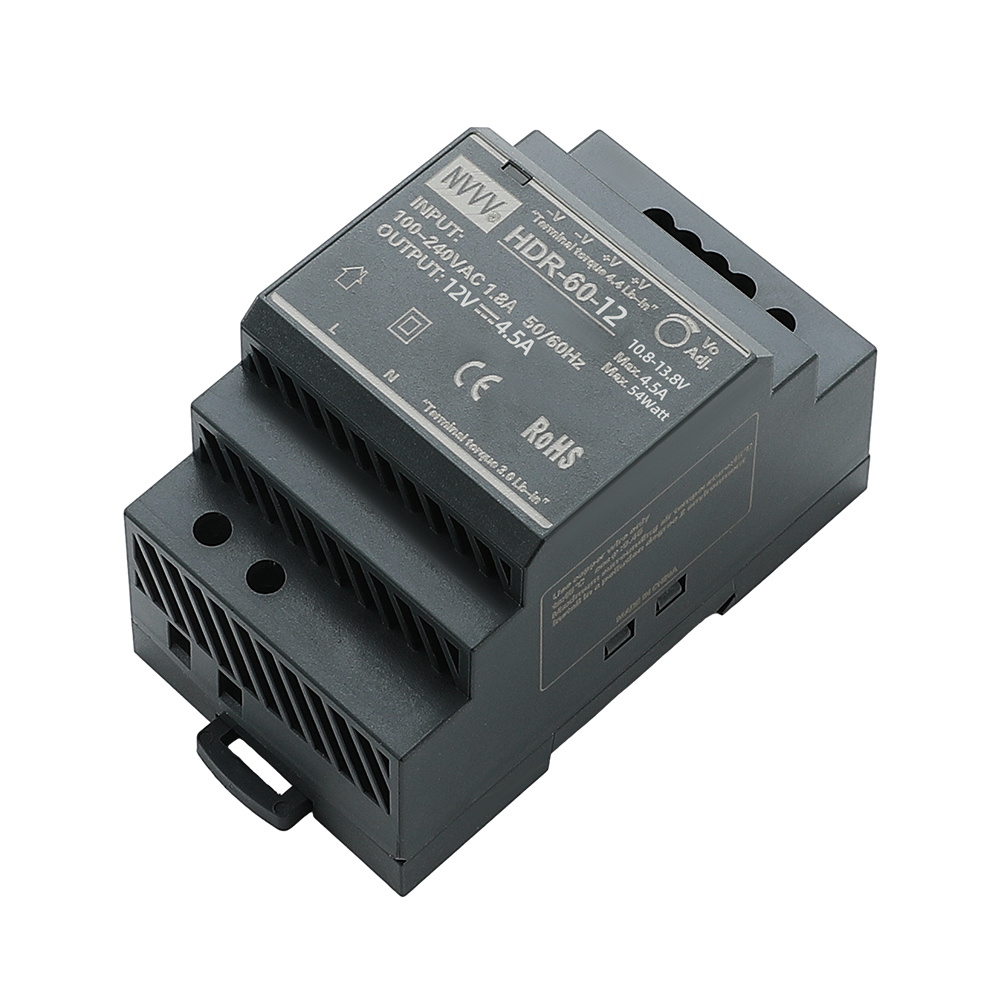Detailed explanation of switching power supply: in-depth analysis from technology to application
Switching Mode Power Supply (SMPS) plays an important role in modern electronic devices. It is widely used in various fields, from computers and televisions to communication equipment and industrial control systems. Compared with traditional linear power supplies, SMPS has higher efficiency, smaller size and lighter weight. However, it is not always easy to understand and choose the right SMPS. This article will explore the working principle, design considerations and challenges and solutions of SMPS in practical applications through three key questions, providing you with comprehensive knowledge and practical suggestions.
What is the difference between the working principle of SMPS and linear power supply?
Working principle
The working principle of switching power supply is based on converting the input voltage into high-frequency AC through switching transistors, then adjusting the voltage through transformers, and finally outputting stable DC after rectification and filtering. The core steps are as follows:
1. Input rectification and filtering: The input voltage (usually AC) is first rectified and filtered to convert it into DC.
2. Switch conversion: DC is switched into high-frequency pulse current through high-speed switching devices (such as MOSFET).
3. Transformation and rectification: The high-frequency pulse current is adjusted through a high-frequency transformer to adjust the voltage, and then rectified into DC.
4. Output filtering: Finally, the rectified DC is smoothed by a filter and outputs a stable DC voltage.
Working principle of linear power supply
The linear power supply controls the output voltage by adjusting the difference between the input voltage and the output voltage. Its basic working process is as follows:
1. Transformation: The input voltage (usually AC) is stepped down to a voltage close to the required output voltage through a transformer.
2. Rectification and filtering: The transformed voltage is converted to DC through rectification and filtering.
3. Voltage regulation: The voltage is adjusted to a precise output voltage through a linear voltage regulator (such as a transistor or integrated circuit).
Difference
1. Efficiency: The efficiency of SMPS is generally higher than that of linear power supplies because it reduces energy loss through high-frequency switching, while linear power supplies consume more energy during the regulation process.
2. Volume and weight: Due to the high-frequency working characteristics of SMPS, its transformer and other components can be made smaller and lighter, while linear power supplies require larger transformers and heat sinks.
3. Thermal management: SMPS has high efficiency, generates less heat, and has relatively low heat dissipation requirements; linear power supplies have high energy loss and generate more heat, so they need better heat dissipation design.
4. Output noise: SMPS may generate high-frequency noise, requiring additional filters to reduce noise interference, while linear power supplies usually have lower output noise.
What key factors should be considered when designing SMPS?
Efficiency
When designing SMPS, efficiency is a crucial consideration. High efficiency not only reduces energy loss, but also reduces heat generation, thereby improving the reliability and life of the overall system. Ways to improve efficiency include optimizing switching frequency, selecting efficient switching devices, and improving circuit topology.
Heat dissipation management
Although SMPS has high efficiency, it still generates a certain amount of heat, so heat dissipation management is also a key issue in design. Heat dissipation design includes selecting a suitable heat sink, designing a good heat dissipation path, and using methods such as forced air cooling or liquid cooling to effectively dissipate heat.
Electromagnetic compatibility (EMC)
Because SMPS operates at high frequencies, it is prone to electromagnetic interference (EMI). When designing, it is necessary to consider how to reduce EMI to meet relevant EMC standards. Common methods include using shielding, filters, and reasonable wiring design.
Output stability
The output voltage stability of SMPS directly affects the normal operation of the load device. Factors such as load regulation, line regulation and temperature drift need to be considered in the design to ensure that a stable output voltage can be provided under different working conditions.
Safety
In order to protect the safety of equipment and users, various protection mechanisms need to be included in the SMPS design, such as overvoltage protection, overcurrent protection, overtemperature protection and short-circuit protection. These protection mechanisms can cut off the power supply in time under abnormal conditions to avoid equipment damage or personal injury.
Cost
Although high-performance design can bring many advantages, cost is also a factor that cannot be ignored in the design. It is necessary to find a balance between performance and cost and select appropriate materials and components to meet performance requirements and control costs.
Size and weight
The size and weight of SMPS directly affect its feasibility in practical applications. Miniaturization and lightweight design not only help save space, but also improve portability and ease of use. In the design, it is necessary to reasonably arrange the positions of various components and optimize the circuit layout to achieve the best size and weight ratio.
What are the common problems and solutions of SMPS in practical applications?
High-frequency noise
SMPS operates at high frequencies and is prone to high-frequency noise, which may interfere with the normal operation of other electronic devices. Solutions to high-frequency noise include:
1. Shielding and grounding: Using metal shielding covers and reasonable grounding design can effectively reduce the radiation of high-frequency noise.
2. Filtering: Adding filters at the input and output ends can suppress the conduction of high-frequency noise.
3. Wiring optimization: Reasonable PCB layout and wiring design can reduce the coupling between noise sources and sensitive circuits.
Thermal management issues
Although SMPS has high efficiency, it still generates a lot of heat in high-power applications. Solutions to thermal management issues include:
1. Heat sink and fan: Using efficient heat sinks and forced air cooling systems can effectively reduce the temperature.
2. Thermal design optimization: Reasonably arrange heat sources and heat dissipation paths in PCB design, and use heat pipes or thermal pads to conduct heat to the heat sink.
3. Material selection: Selecting materials with good thermal conductivity will help improve the heat dissipation effect.
Output voltage fluctuation
SMPS may experience unstable output voltage when the load changes or the input voltage fluctuates. Solutions include:
1. Feedback control: Through the feedback control circuit, the output voltage is monitored and adjusted in real time to maintain stability.
2. Voltage stabilization circuit: Add a voltage stabilization circuit at the output end to further stabilize the output voltage.
3. Input filtering: Add a filter at the input end to reduce the impact of input voltage fluctuations on the output.
Electromagnetic interference (EMI)
SMPS operates at high frequencies and is prone to electromagnetic interference, which affects the normal operation of other devices. Solutions to EMI include:
1. Shielding: Use a metal shielding cover around the SMPS to reduce electromagnetic radiation.
2. Filtering: Add filters at the input and output ends of the power supply to suppress the propagation of electromagnetic interference.
3. Layout optimization: Reasonably design the PCB layout to reduce the coupling between the electromagnetic interference source and the sensitive circuit.
Conclusion
As a core component in modern electronic devices, the switch mode power supply has the advantages of high efficiency, small size and light weight. By deeply understanding its working principle, design considerations, and common problems and solutions in practical applications, you can better select and use SMPS and improve the performance and reliability of the equipment. I hope this article can provide you with valuable reference and help in understanding and applying SMPS.








